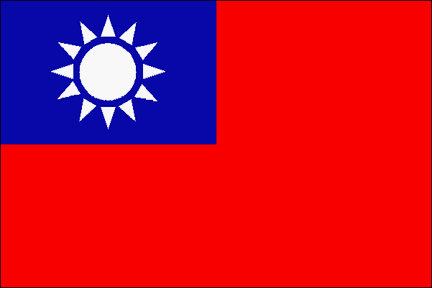



Overview
The primary objective of the ROC's defense policy is to defend Taiwan, the Pes- cadores, Kinmen, and Matsu. This entails establishing a fighting force of sufficient readiness to guard the nation and protect its people. The direct and most serious threat to the ROC's national security remains the unwillingness of Peking to renounce the use of military force against Taiwan. Thus, while ROC national defense strategy calls for balanced development of the three Armed Forces, naval and air supremacy receive first priority. In addition to current defensive preparations, a long-term policy of developing an elite fighting force and self-sufficiency in defense technology is also being strictly followed. This calls for restructuring the Armed Forces, streamlining command levels, renovating logistical systems, merging or reassigning military schools and upper-ranking staff units, as well as reducing the total number of men in uniform.
The defense budget for the ROC military has been reduced annually during the past decade and has become more and more open to public scrutiny. The downward trend in ROC military expenditures was especially evident in fiscal 1994, when the budget shrank 4.65 percent. The defense budget is becoming increasingly public. In fiscal 1996, only 36 percent of the budget was considered confidential, in comparison to 51 percent in fiscal 1993 and 46 percent in 1994, respectively. The defense budget for fiscal 1996 will occupy just under 23 percent of the total government budget, down from 24.5 percent of the previous year.
The thinking behind changes to the ROC's Armed Forces over the past few years reflects a shift from equal stress on offense and defense to assuring defense. This strategic principle, as implemented under the Ten-Year Troop Reduction Plan , has led to a targeted force of less than 400,000 troops by the year 2003 and an increase in the ratio of combat troops to overall military manpower.
The allocation of resources among the three services will give priority to air superiority and control of the seas in defensive operations, as well as to coastal defense. Accordingly, a ten-year program is to be implemented in three phases, including the development of a practicable table of organization for the three services to facilitate training and carry out peacetime missions, elimination of overlapping staff units in the three major services, and consolidation of the General Staff Headquarters of the Ministry of National Defense (MND) and the general headquarters of the three services, transferring non-military tasks to organizations outside the MND.
Second-generation weapon systems used by the three armed services are also being actively updated. These include the inception of four E-2T air defense warning systems, the formation of the first Ching-kuo indigenous defense fighter (IDF) squadron, the commissioning of the Cheng-kung and Knox-class missile frigates, and taking delivery of a second batch of AH-1W attack helicopters and OH-58D reconnaissance helicopters.





Sources and Resources
http://www.fas.org/irp/world/taiwan/overview.htm
Created by John Pike
Maintained by Steven Aftergood
Updated Sunday, July 18, 1999 5:18:02 PM











